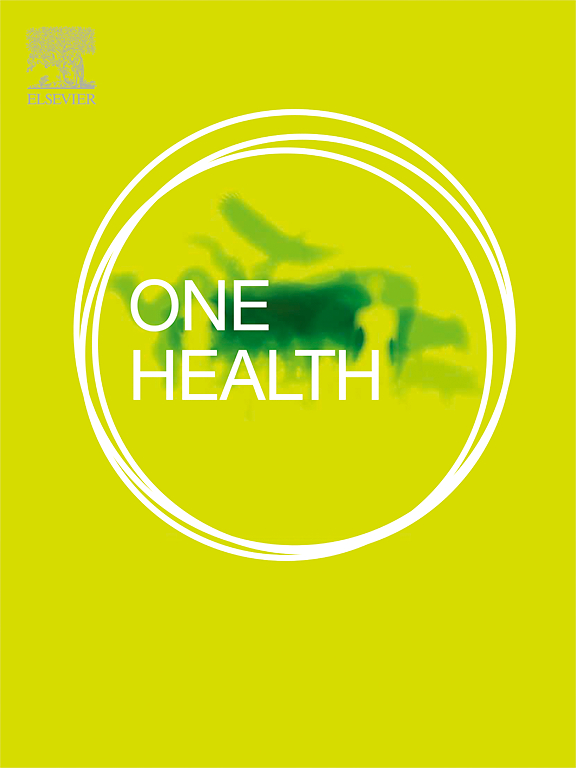Prevalence and antimicrobial resistance of Campylobacter jejuni and Campylobacter coli over time in Thailand under a One Health approach: A systematic review and meta-analysis
IF 4.1
2区 医学
Q1 INFECTIOUS DISEASES
引用次数: 0
Abstract
Campylobacter spp. are major food-borne zoonotic pathogens impacting food safety worldwide. Thailand is one of the countries facing with a significant burden of Campylobacter infections and is recognized as a hotspot of AMR. Our study applied a systematic review and meta-analysis, using a One Health perspective, to investigate the prevalence and AMR of Campylobacter jejuni (C. jejuni) and Campylobacter coli (C. coli) over time in Thailand, from 1985 to 2023. Based on the PRISMA guidelines, a literature search using PubMed, ScienceDirect, and Google Scholar to identify the articles reporting prevalence, sequence types (STs), antimicrobial susceptibility, and resistance genes of Campylobacter spp. in humans, animals, food, and environmental samples was performed. Eighty-one articles were retrieved for systematic review, with 33 reporting Campylobacter spp. prevalence and 20 containing AMR data collected for meta-analysis. The highest prevalence of C. jejuni was found in chickens (43.6 %) and chicken products (31.4 %), followed by ducks (16.7 %), the general human population with diarrhea (15.9 %), children with diarrhea (10.7 %). C. coli was also prevalent in chickens (12.6 %) and chicken products (10.4 %). C. jejuni prevalence decreased by 14.8 % among children with diarrhea (p = 0.006), but increased by 16.7 % in chicken products (p = 0.007). Sixty-two STs were identified, with ST 574, ST 1075, ST 51 being the most prevalent STs recorded. Five STs, including ST 50, ST 51, ST 354, ST 464, and ST 574, were reported in both humans and chickens. The AMR levels were highest against quinolones, ranging 75.4 %–94.8 % in human-related categories and 71.6 %–88.7 % in chicken-related categories. Notably, ciprofloxacin-resistant and nalidixic acid-resistant C. jejuni strains collected from chickens increased by 11.9 % (p = 0.004) and 16.1 % (p = 0.027), respectively. Thirteen resistance genes/mutations were reported, with the phenotypic resistance linked to gyrA mutations and tet(O) genes. The high prevalence and increasing trend of AMR in C. jejuni and C. coli underscore the critical need for One Health surveillance to address the rising AMR challenge posed by these pathogens in Thailand.
在同一健康方针下,泰国空肠弯曲杆菌和大肠弯曲杆菌的流行率和耐药性:一项系统回顾和荟萃分析。
弯曲杆菌是影响全球食品安全的主要食源性人畜共患致病菌。泰国是弯曲杆菌感染负担最重的国家之一,被认为是抗生素耐药性的热点地区。本研究采用系统回顾和荟萃分析,采用One Health的观点,调查了1985年至2023年泰国空肠弯曲杆菌(C. jejuni)和大肠弯曲杆菌(C. coli)的患病率和AMR。根据PRISMA指南,使用PubMed、ScienceDirect和谷歌Scholar进行文献检索,以确定在人类、动物、食物和环境样本中报道弯曲杆菌的流行程度、序列类型(STs)、抗菌敏感性和耐药基因的文章。共检索81篇文章进行系统评价,其中33篇报道弯曲杆菌流行情况,20篇包含AMR数据进行meta分析。空肠梭菌感染率最高的是鸡(43.6%)和鸡制品(31.4%),其次是鸭(16.7%)、普通腹泻人群(15.9%)和腹泻儿童(10.7%)。大肠杆菌也普遍存在于鸡(12.6%)和鸡产品(10.4%)中。腹泻患儿空肠梭菌患病率下降14.8% (p = 0.006),而鸡肉制品患病率上升16.7% (p = 0.007)。共发现62个ST,其中ST 574、ST 1075和ST 51是最常见的ST。在人类和鸡中报告了5种STs,包括ST 50、ST 51、ST 354、ST 464和ST 574。对喹诺酮类药物的AMR水平最高,在人类相关类别中为75.4% - 94.8%,在鸡相关类别中为71.6% - 88.7%。其中,耐环丙沙星和耐萘啶酸空肠梭菌分别增加了11.9% (p = 0.004)和16.1% (p = 0.027)。报告了13个抗性基因/突变,表型抗性与gyrA突变和tet(O)基因有关。空肠梭菌和大肠杆菌中抗菌素耐药性的高流行率和上升趋势强调了一个健康监测的迫切需要,以解决泰国这些病原体带来的日益严重的抗菌素耐药性挑战。
本文章由计算机程序翻译,如有差异,请以英文原文为准。
求助全文
约1分钟内获得全文
求助全文
来源期刊

One Health
Medicine-Infectious Diseases
CiteScore
8.10
自引率
4.00%
发文量
95
审稿时长
18 weeks
期刊介绍:
One Health - a Gold Open Access journal.
The mission of One Health is to provide a platform for rapid communication of high quality scientific knowledge on inter- and intra-species pathogen transmission, bringing together leading experts in virology, bacteriology, parasitology, mycology, vectors and vector-borne diseases, tropical health, veterinary sciences, pathology, immunology, food safety, mathematical modelling, epidemiology, public health research and emergency preparedness. As a Gold Open Access journal, a fee is payable on acceptance of the paper. Please see the Guide for Authors for more information.
Submissions to the following categories are welcome:
Virology,
Bacteriology,
Parasitology,
Mycology,
Vectors and vector-borne diseases,
Co-infections and co-morbidities,
Disease spatial surveillance,
Modelling,
Tropical Health,
Discovery,
Ecosystem Health,
Public Health.
 求助内容:
求助内容: 应助结果提醒方式:
应助结果提醒方式:


